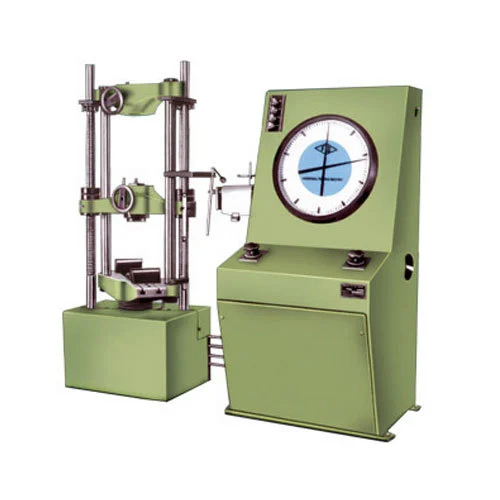
Universal Testing Machines (UTMs) are indispensable tools in the field of material testing, offering a versatile platform for evaluating the mechanical properties of various materials. Among the multitude of tests conducted by UTMs, flexural and compression testing stand out as crucial assessments, providing insights into the strength, stiffness, and deformation characteristics of materials. In this article, we will delve into the principles, methodologies, and significance of flexural and compression testing, showcasing the Universal Testing Machine in action.
Understanding Flexural Testing: Flexural testing, also known as bending or transverse testing, involves applying a load to a material in a controlled manner to assess its bending behavior. This test is particularly important for materials used in construction, such as concrete, wood, and composite materials. In a flexural test using a UTM, a specimen is subjected to a three-point or four-point loading configuration, simulating real-world scenarios where materials experience bending stresses.The UTM precisely measures parameters such as flexural strength, modulus of elasticity, and deformation characteristics during the test. This information is crucial for engineers and material scientists, providing insights into the material’s ability to withstand bending forces and deformations in structural applications.
Key Components of Flexural Testing on UTMs: Flexural testing on a UTM involves key components such as a loading fixture, support points, and a displacement measuring device. The UTM applies a controlled force to the material, and the deformation is measured as the specimen bends. The data collected during the test is used to create stress-strain curves, helping to characterize the material’s behavior under flexural stress.For construction materials like concrete, which is commonly subjected to bending forces in structural applications, flexural testing is vital for ensuring the material meets specified design criteria and safety standards. The results of these tests guide engineers in optimizing material selection and design for various construction projects.
Insights from Compression Testing: Compression testing, on the other hand, evaluates a material’s ability to withstand forces pushing it inward. Commonly applied to materials like concrete, metal, and plastics, compression tests on UTMs involve subjecting a cylindrical or cubical specimen to axial loads until failure. This helps determine the material’s compressive strength, elasticity, and deformation characteristics.In the realm of construction materials, compression testing is fundamental. For example, in assessing the strength of concrete, compression tests on UTMs aid in determining the material’s load-bearing capacity and its ability to withstand compressive forces in structures like bridges, buildings, and infrastructure projects.
Versatility of UTMs in Flexural and Compression Testing: One of the significant advantages of using UTMs for flexural and compression testing lies in their versatility. These machines can accommodate various specimen sizes, shapes, and loading configurations, allowing for a broad range of materials to be tested. Whether it’s assessing the flexibility of a composite material or determining the compressive strength of a metal alloy, UTMs offer a standardized and adaptable approach.The ability to conduct both flexural and compression tests on a single UTM makes these machines invaluable in quality control laboratories, research institutions, and industries where materials play a critical role in product performance.
Significance for Material Selection and Structural Design: The insights gained from flexural and compression testing on UTMs have a direct impact on material selection and structural design. Engineers can use the data to optimize material choices, ensuring that the selected materials meet the specific requirements of a given application. Whether designing load-bearing components or assessing the durability of construction materials, the results obtained from UTMs guide engineers in making informed decisions to enhance structural integrity and safety.
Conclusion:
Flexural and compression testing, conducted with the assistance of Universal Testing Machines, play a pivotal role in material characterization and structural design. From assessing the bending behavior of construction materials to evaluating the compressive strength of metals and polymers, UTMs offer a standardized, adaptable, and versatile platform for material testing. As technology advances, UTMs continue to evolve, providing engineers and researchers with enhanced capabilities to explore the mechanical properties of materials in a diverse range of applications. The insights gained from flexural and compression testing not only contribute to the development of safer and more resilient structures but also advance the understanding of materials in various industries.
Leave a comment